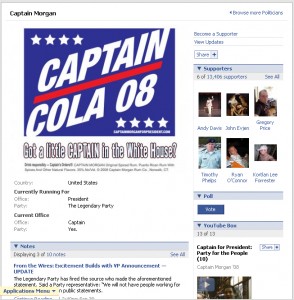you say social media, I say…
Here’s another download from last week’s Digital Symposium which I spoke at and attended (see express vs. operationalize for a synopsis of my talk) — this is from Mike Moran‘s presentation.
Mike is the author of  Do It Wrong Quickly: How the Web Changes the Old Marketing Rules. He’s also a former IBM engineer turned Internet marketing guru, which means he has a great perspective on all the stuff trips up marketers — like how to talk about new Internet technologies in a way that your CEO, CFO, head of R&D, etc. are going to understand.
Do It Wrong Quickly: How the Web Changes the Old Marketing Rules. He’s also a former IBM engineer turned Internet marketing guru, which means he has a great perspective on all the stuff trips up marketers — like how to talk about new Internet technologies in a way that your CEO, CFO, head of R&D, etc. are going to understand.
One of the things he covered in his presentation was a categorization framework for social media — buckets that help organize and clarify different social media technologies. Here are the 4 categories he discussed along with explanations and commentary from him (and me):
1. content-based — e.g., blogs, webcasts, YouTube, etc. — any social media in which the point is the content (creating and sharing it) — for companies, doing content-based social media is essentially PR on the web and the most basic approach
2. personality-based — e.g., FaceBook , LinkedIn, etc. — commonly referred to as social networking sites, this kind of social media is for connecting with others — companies might engage with personality-based sites by developing profiles for their brand characters or their brands themselves, targeting market segments (particularly useful for B2B), and/or creating groups or sub-networks to connect brand stakeholders
, LinkedIn, etc. — commonly referred to as social networking sites, this kind of social media is for connecting with others — companies might engage with personality-based sites by developing profiles for their brand characters or their brands themselves, targeting market segments (particularly useful for B2B), and/or creating groups or sub-networks to connect brand stakeholders
3. interest-based — e.g., Yahoo! Groups, Google Groups, etc. — these are communities, message boards, and forums formed around specific topics — like personality-based sites, this type of social media may be used for targeting a specific market segment — it also seems like a great research source
4. fantasy-based — e.g., Webkinz World,  Second Life, etc. — fantasy-based social media are virtual worlds in which people adopt personas and interact with each other — more and more brands are setting up their own custom Second Lifes in order to facilitate deeper customer engagement with the brand
Second Life, etc. — fantasy-based social media are virtual worlds in which people adopt personas and interact with each other — more and more brands are setting up their own custom Second Lifes in order to facilitate deeper customer engagement with the brand
Perhaps the next time you try to explain a new marketing program to your corporate execs you can use this framework to help them understand the growing and ever-changing landscape of social media. Thanks, Mike!